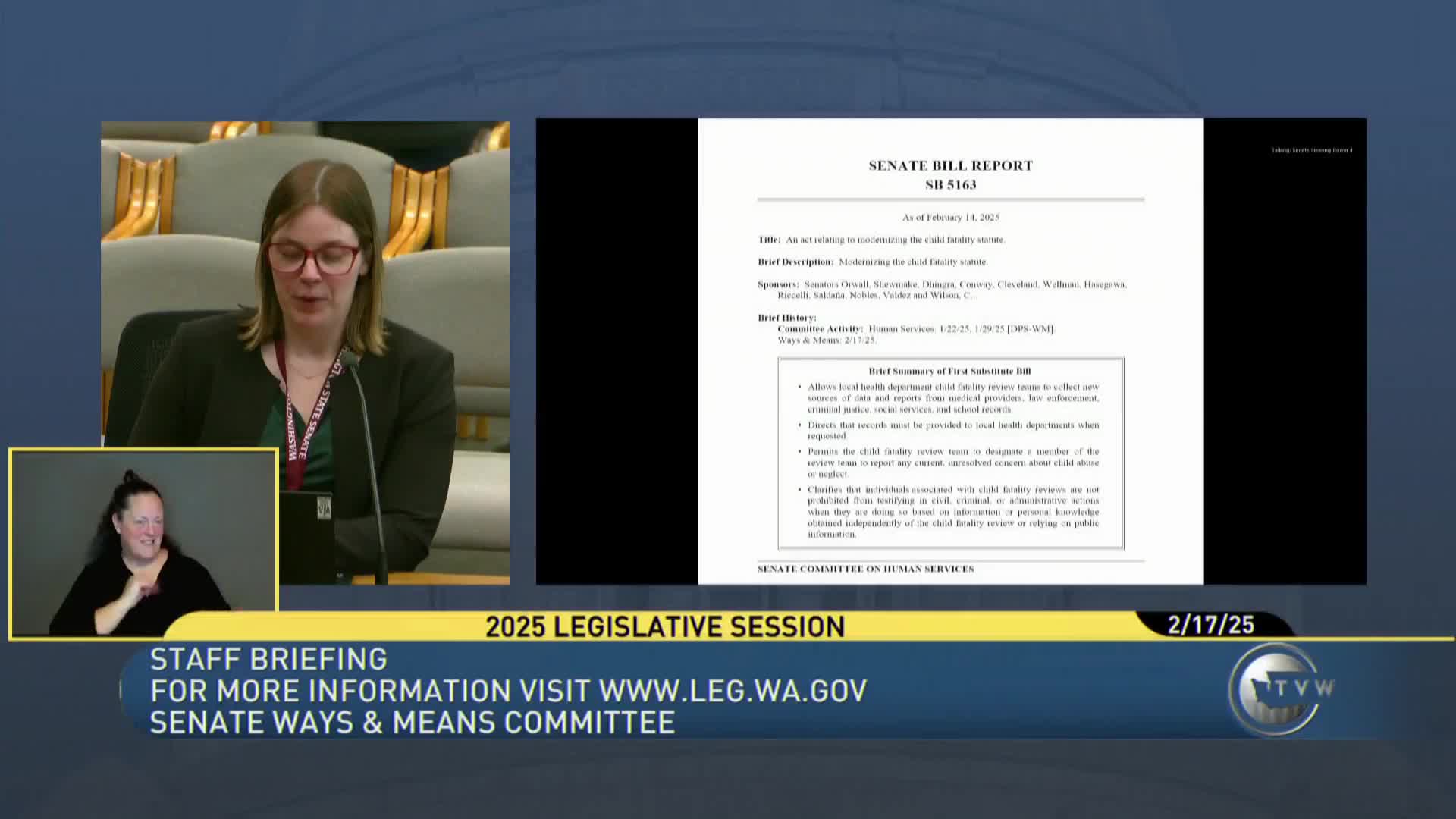Senate Bill 5,163 modernizes child fatality reviews to include youth up to 19 years
February 17, 2025 | Ways & Means, Senate, Legislative Sessions, Washington
This article was created by AI summarizing key points discussed. AI makes mistakes, so for full details and context, please refer to the video of the full meeting. Please report any errors so we can fix them. Report an error »

A pivotal discussion unfolded during the Senate Ways & Means meeting on February 17, 2025, as lawmakers reviewed Substitute Senate Bill 5,163, aimed at modernizing the child fatality statute. This significant legislation seeks to expand the definition of a child fatality review to include individuals up to 19 years old, enhancing the state's ability to analyze and prevent child deaths.
The bill, which emerged from the Human Services Committee, emphasizes a systematic approach to reviewing child fatalities. This process involves examining medical records, conducting interviews with parents and caretakers, and analyzing case information—all while ensuring confidentiality by redacting identifying details. The Department of Health will play a crucial role in assisting local health jurisdictions with reporting and technical support.
Key provisions of the bill allow for the retention of identifying and geographic information to identify trends and improve analysis. If a child fatality team uncovers unresolved concerns regarding child abuse or neglect, they can report these findings to the child abuse hotline, although they are not mandated reporters.
The financial implications of the bill were also discussed, with an estimated total cost of $341,000 for the 2025-2027 biennium and ongoing annual costs of $71,000 for the Department of Health and $100,000 for the Department of Children, Youth, and Families. These funds will support staffing and data management efforts essential for the bill's implementation.
Public testimony highlighted strong support for the bill, with representatives from local health officials and prosecuting attorneys emphasizing its importance in aligning state practices with national standards. They expressed optimism that these updates would bolster efforts to protect children from injury and death.
As the committee moves forward, the passage of Senate Bill 5,163 could mark a significant step in enhancing child safety measures in Washington State, with the potential for broader implications in child fatality prevention strategies.
The bill, which emerged from the Human Services Committee, emphasizes a systematic approach to reviewing child fatalities. This process involves examining medical records, conducting interviews with parents and caretakers, and analyzing case information—all while ensuring confidentiality by redacting identifying details. The Department of Health will play a crucial role in assisting local health jurisdictions with reporting and technical support.
Key provisions of the bill allow for the retention of identifying and geographic information to identify trends and improve analysis. If a child fatality team uncovers unresolved concerns regarding child abuse or neglect, they can report these findings to the child abuse hotline, although they are not mandated reporters.
The financial implications of the bill were also discussed, with an estimated total cost of $341,000 for the 2025-2027 biennium and ongoing annual costs of $71,000 for the Department of Health and $100,000 for the Department of Children, Youth, and Families. These funds will support staffing and data management efforts essential for the bill's implementation.
Public testimony highlighted strong support for the bill, with representatives from local health officials and prosecuting attorneys emphasizing its importance in aligning state practices with national standards. They expressed optimism that these updates would bolster efforts to protect children from injury and death.
As the committee moves forward, the passage of Senate Bill 5,163 could mark a significant step in enhancing child safety measures in Washington State, with the potential for broader implications in child fatality prevention strategies.
View full meeting
This article is based on a recent meeting—watch the full video and explore the complete transcript for deeper insights into the discussion.
View full meeting
